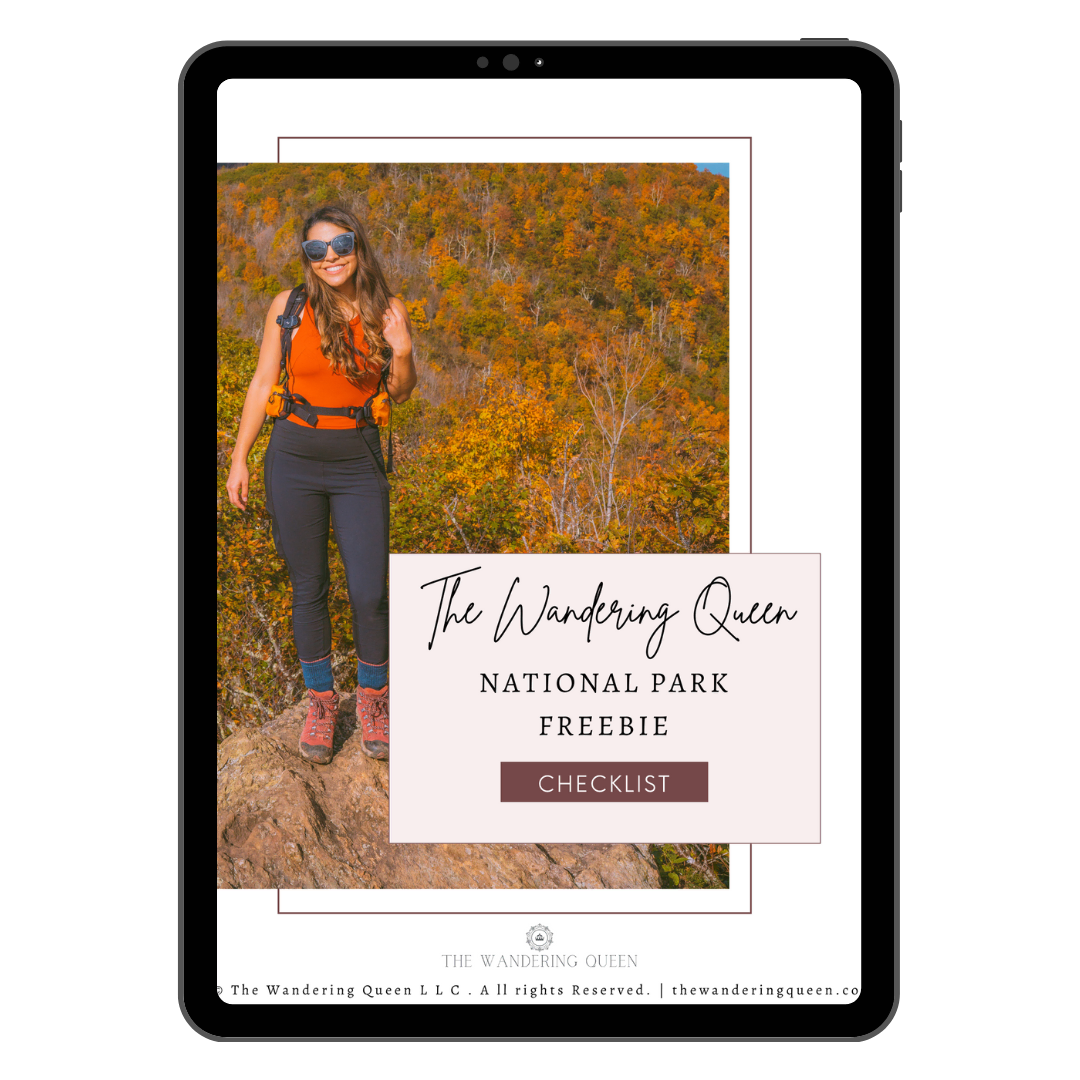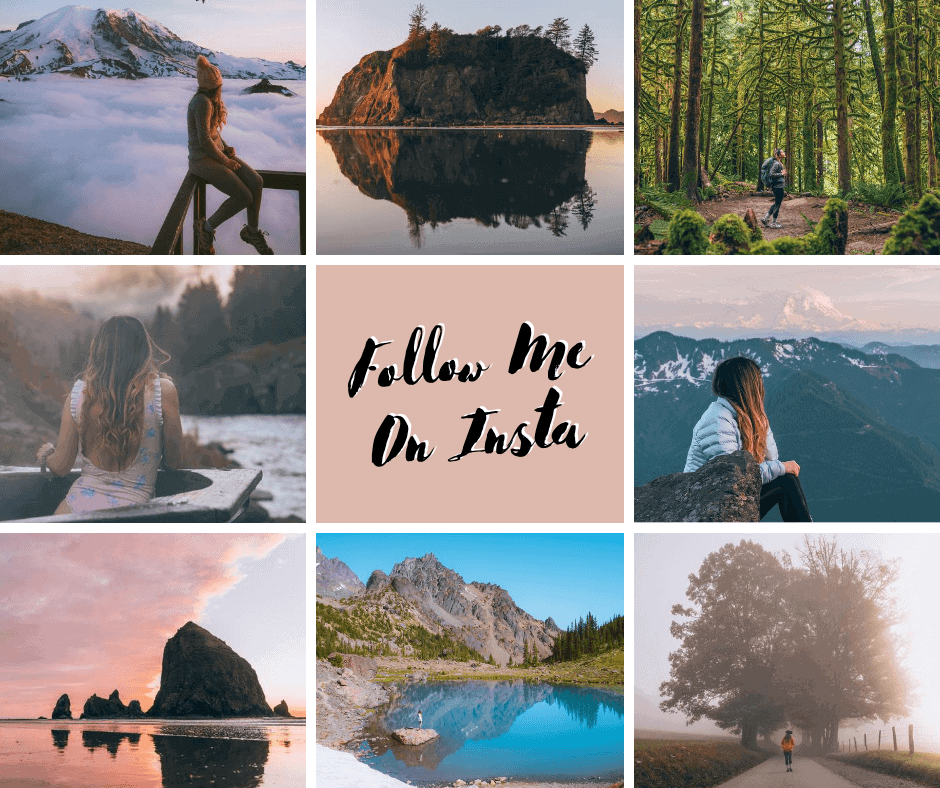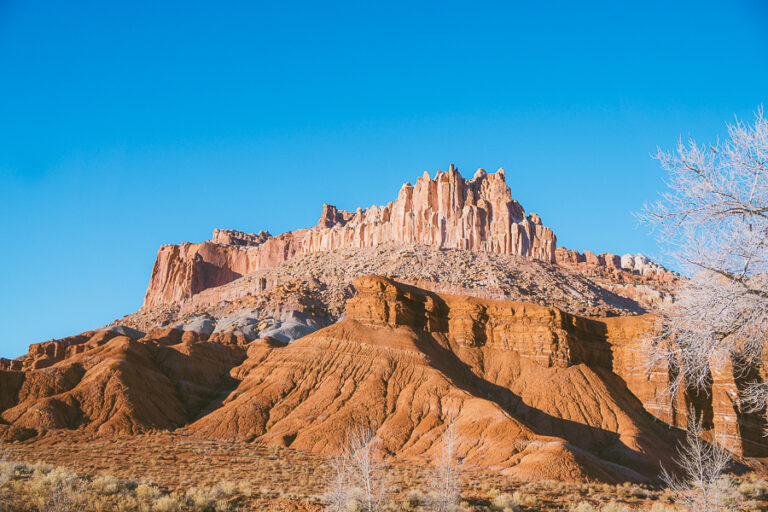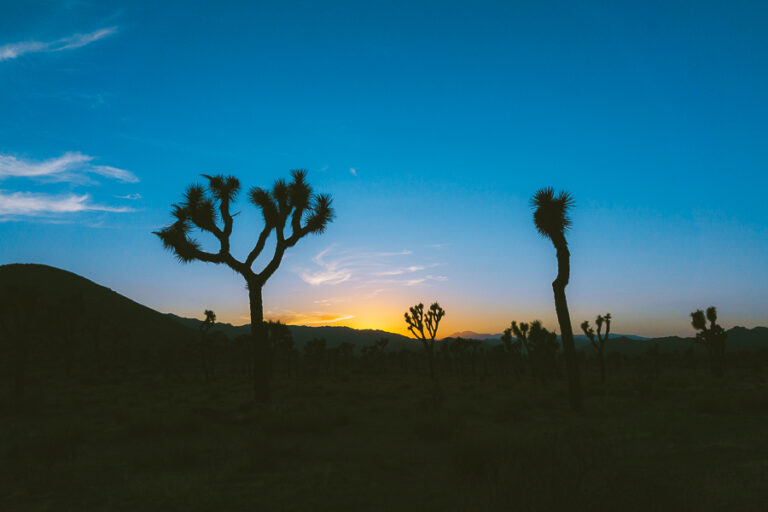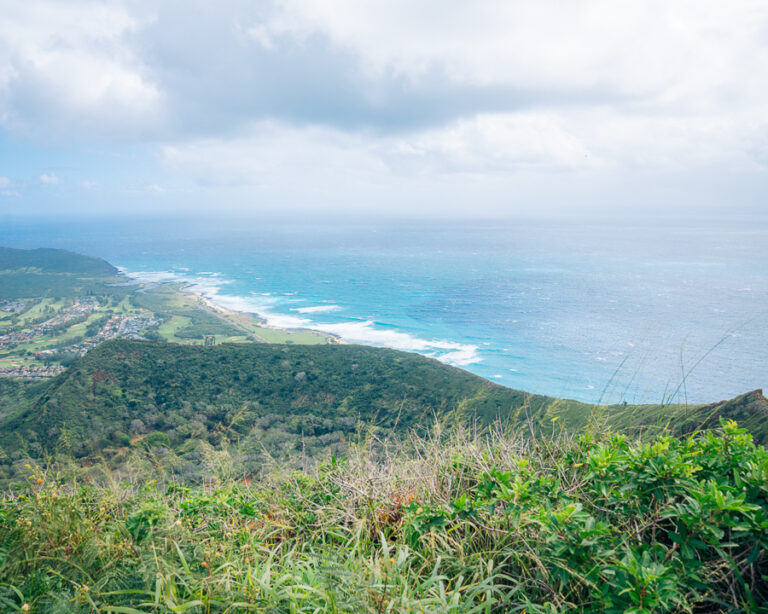Best Time to Visit Shenandoah National Park
Spanning 200,000 acres of the Blue Ridge Mountains in Virginia, Shenandoah National Park is a natural wonder known for its stunning landscapes, diverse wildlife, and rich history. The park draws over 1.4 million annual visitors, making it one of the nation’s most visited parks.
You won’t be short of things to do in Shenandoah National Park, but you may be wondering what the best time to visit this national park is. Well, buckle up because you’ve landed in the right place. This guide breaks down the seasons, weather conditions, and a few things to do.
From leaf peeping in the fall to chasing waterfalls, taking scenic drives, or camping in spring or summer, Shenandoah has something for everyone. Even winter lovers will have a list of things to do, from snowshoeing to cross-country skiing and wildlife tracking.
Let’s dive in!
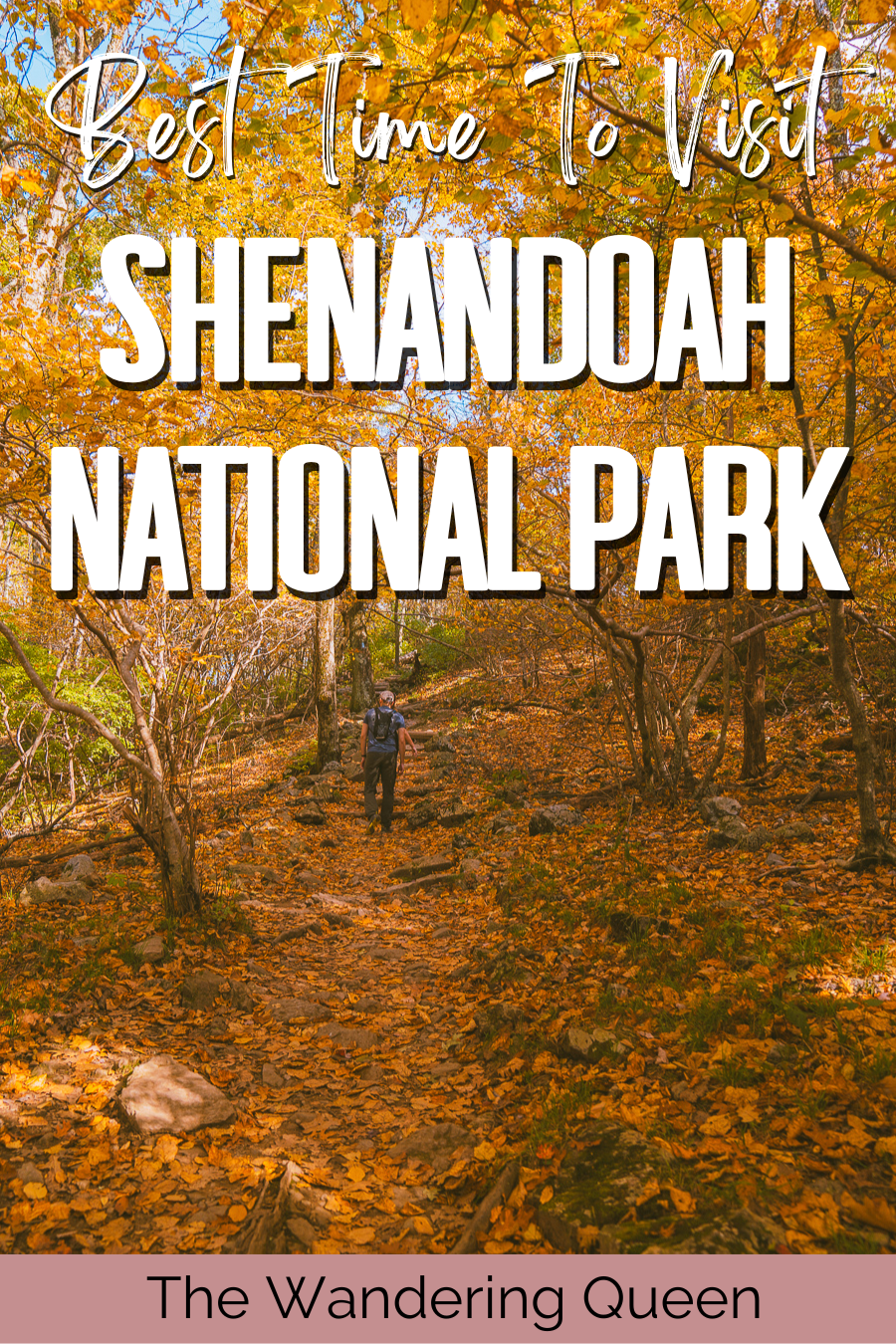
Disclosure: This post contains affiliate links. If you click one of them, I may receive a small commission (for which I am very grateful for) at no extra cost to you.
Shenandoah National Park
Related Posts
How to Get to Shenandoah National Park
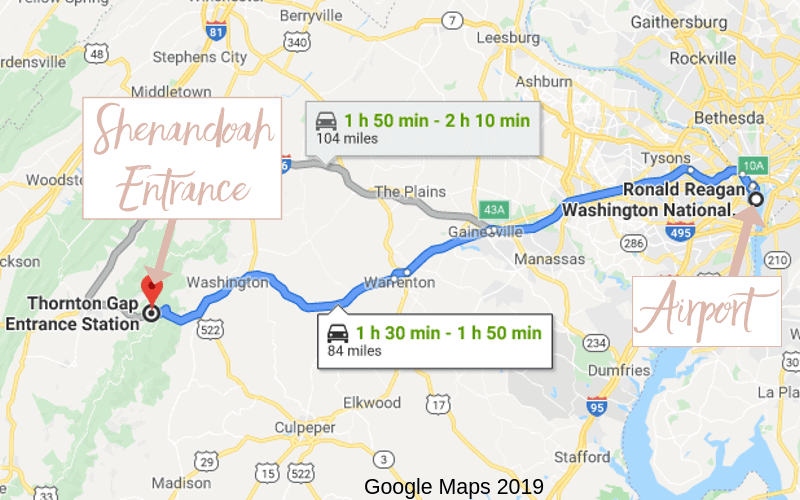
There are several ways to get to Shenandoah. The national park is quite large, stretching about 105 miles from the north end at Front Royal to the south end near Waynesboro. Use one of the four park entrances. Enter through the one closest to your airport of choice.
Here are a few airports near Shenandoah National Park and their relevant entrance stations:
- Dulles International Airport (IAD): Approximately 62 miles to the Front Royal entrance, taking around 1 hour and 30 minutes. It’s the closest major airport.
- Ronald Reagan Washington National Airport (DCA): About 90 miles to the north entrance at Front Royal, taking around 1 hour and 45 minutes.
- Shenandoah Valley Regional Airport (SHD): Approximately 25 miles to the Swift Run Gap entrance, taking around 35 minutes.
- Charlottesville-Albemarle Airport (CHO): About 30 miles to the southern entrance at Rockfish Gap, taking around 40 minutes.
Best Time to Go to Shenandoah National Park

The best time to go to Shenandoah National Park depends on your preferences. You can visit all year round, so you have a few options. Fall and spring are largely considered the best times to visit Shenandoah for the vibrant fall foliage and colorful wildflowers they bring.
Summer sees the most visitors as the national park’s high season. Due to its warmer weather, the season offers the most outdoor activities. You can also visit in winter. Although the season brings inclement weather, the valley clears out, making for a tranquil getaway.
Worst Time to Go to Shenandoah National Park

Shenandoah National Park can be enjoyed year-round, but the late summer months (July and August) can be less ideal due to high temperatures and humidity. Additionally, these months can be crowded, particularly on weekends.
Ultimately, the worst time to go to Shenandoah National Park depends on what you want to avoid during your trip.
Download my free Outdoor Photography Guide
Visiting Shenandoah National Park in Spring (March to May)

Spring is one of the most ideal times to visit Shenandoah. The wildflowers bloom, leaves begin to fill the bare trees after a bitter winter, and the hibernating wildlife reappears. Temperatures in Shenandoah National Park in March average 35°F and 55°F in May.
Things to Do in Shenandoah National Park in Spring
With pleasant weather in spring, many of the popular trails are suitable for hiking. Adding to this, many facilities and services, like visitor centers within the park begin to open.
Go Wildflower Viewing
The blooming wildflowers across the Shenandoah Valley make this national park a must-visit in the spring season. With over 860 species of flowering plants, ranging from azaleas to wild geraniums, you can admire various flowers along trails such as the famous Limberlost Trail.
You’ll find other hiking trails along Skyline Drive, which lead to carpets of trilliums, bluets, and violets. Don’t miss out on Wildflower Weekend in May, an annual celebration offering guided hikes and programs focused on the park’s diversity.
Do Some Birdwatching + Wildlife Spotting
Spring is also a fantastic time for birdwatching and wildlife viewing. The spring migration brings numerous species, including warblers, vireos, and thrushes. Shenandoah hosts over 190 species of birds throughout the year, and you can spot them in many parts.
Big Meadows is a vast, open area with rich birdlife, perfect for spotting various bird species and wildlife like white-tailed deer and even black bears. You’ll have access to several hikes for birdwatching, like the Appalachian Trail, Stony Man, and the Fox Hollow Trail.
Take on the Waterfall Hikes
Hiking trails in the spring can get quite crowded due to the warmer weather and longer days, but you can find reprieve from the heat by taking one of Shenandoah’s best waterfall hikes.
Hike to Dark Hollow Falls or Rose River Falls, both featuring cascading water against a rocky backdrop and surrounded by lush greenery. These are great for hikers, photographers, and families looking for a rewarding outdoor adventure.
Visiting Shenandoah National Park in Summer (June to August)

Summer ushers in the peak season in Shenandoah National Park. With warm temperatures and longer days, this season is ideal for an extensive Shenandoah National Park itinerary. But, you’ll contend with larger crowds. Daily average temperatures hover around 65°F.
Things to Do in Shenandoah National Park in Summer
Vacation mode is in full swing in the summer as the park’s facilities and services are in full operation. Park trails are open, and visitor centers host many ranger programs and events.
Take a Scenic Drive along the Skyline Drive
An excellent way to avoid the summer heat is to drive along the 105-mile-long Skyline Drive, which has 75 overlooks offering panoramic views of the Blue Ridge Mountains.
This is a National Scenic Byway and a Historic District featuring many breathtaking views. On a clear day, it takes about three hours to drive the entire length. Keep your eyes peeled for the mileposts along the way; these mark scenic overlooks on the Skyline Drive.
Hike Old Rag Mountain
- Mileage: 9.4 miles (loop)
- Elevation Gain: 2,582 feet
- Difficulty: Hard
- Trail Guide: Link

Ready to trek one of the most popular yet challenging hikes in Shenandoah National Park? Look no further than Old Rag Mountain. From its summit, you’ll get sweeping views of the lush valley below, creating a stark contrast against the huge boulders.
This trek is perfect for eager hikers and adventurers looking for a challenging hike. You’ll gain over 2,000 feet of elevation and enjoy some rock scrambling along the way.
Attend the Ranger Programs
Ranger Programs are a great way to learn more about the park while having fun. These educational programs provide insights into the park’s ecology and history. Take guided walks, campfire talks, or Junior Ranger activities (for kids) led by expert park rangers.
Opt for Rapidan Camp tours, which are also led by park rangers. This camp is former President Herbert and First Lady Lou Henry Hoover’s old summer retreat, boasting rustic cabins amidst lush surroundings.
Alternatively, attend the summer events and talks on offer, like A Walk for Sunshine.
Go Horseback Riding
There are over 180 miles of horse trails in Shenandoah National Park. Many of them are generally smooth, gravel paths, while others are rocky, steep, and narrow. In any case, horseback riding in Shenandoah National Park offers a unique way to explore the park.
You can enjoy riding through scenic forests and meadows at Skyland Stable, located at milepost 42.5 along Skyline Drive. Other horse trails include the Rose River Roundtrip, Browns Gap Round Trip, and Old Rag/Weakley Hollow Fire Roads Round Trip.
Visiting Shenandoah National Park in the Fall (September to November)

Fall is arguably the best time to visit Shenandoah, and it’s easy to see why. From vibrant fall leaves to mild weather and lots of opportunities for adventure, there’s simply no better time to explore this wonderland. Average daytime temperatures tend to range from 49°F to 60°F.
Things to Do in Shenandoah National Park in the Fall

As cooler conditions take over the valley, leaves change their color from green to deep hues of reds, oranges, and yellows. You’ll also face larger crowds and colder nights in the fall.
Go Fall Foliage Viewing / Leaf Peeping

Shenandoah is renowned for its vibrant fall leaves. Photographers, nature lovers, and leaf peepers seeking fall beauty can ride along the Skyline Drive or hike trails like Stony Man for excellent leaf-peeping opportunities. It’s hard to predict the peak time for spotting the best fall colors, but the national park has ways of tracking them via social media and webcams.
Enjoy Apple Picking
Shenandoah in the fall offers you a unique opportunity to pick your own fresh apples amidst beautiful scenery. Local orchards like Graves Mountain Farm, Shenandoah Valley Orchards, and Showalter’s Orchard & Greenhouse offer picking apples and other farm activities.
Try Your Hand at Nature Photography
Photography is an amazing way to capture the park’s fall landscape from popular spots like Hawksbill Summit and Big Meadows. Peaking somewhere in mid to late November, vibrant foliage covers the valley, but it can also be admired and captured along the Skyline Drive.

Top Tip: check out these hiking photography tips to help ensure every photo perfectly captures the moment.
Visiting Shenandoah National Park in Winter (December to February)
Although many don’t think of winter as the prime time to explore Shenandoah National Park, the season has its own unique appeal, from snow activities to solitary hikes. Average daily temperatures typically range from 29°F to 39°F during the day but dip to freezing overnight.
Things to Do in Shenandoah National Park in Winter
The national park opens all year, but many facilities close during winter, and road closures are expected due to snow. Nonetheless, winter offers hiking, stargazing, and fun in the snow.
Go Snowshoeing or Cross-Country Skiing
Shenandoah National Park transforms into a winter wonderland during this season. The Limberlost Trail and the gentle slopes of the Bid Meadows Area are the top choices for first-time snowshoeing and cross-country skiing.
You might like snowshoeing along Skyline Drive while it’s still closed for cars and before it’s plowed. Access the Skyline Drive from the Thornton Gap Entrance instead of Front Royal, as you’ll have to face a long, steep incline from the north entrance.

Top Tip: Find everything you’ll need to wear for snowshoeing here.
Take on a Winter Hike
Hiking is the best way to explore Shenandoah National Park in winter. The park is less crowded and offers solitude and tranquility. Its bare trees make spotting wildlife and getting mountain views of peaks like Loft Mountain and Massanutten Mountain much easier.
Hike trails like Hawksbill Summit for clear, crisp views of the winter landscape. Keep your eyes open for stunning ice formations on the national park’s waterfalls and streams.
Stay Overnight for Stargazing
The cold, clear winter nights in Shenandoah provide exceptional visibility for stargazing. Stay overnight and enjoy a star-studded night sky in the Big Meadows Area. On select Fridays, special events are hosted by amateur astronomers. Telescopes are provided but bring your own binoculars, blanket, chair, and flashlight.
Claim your FREE Hiking Checklist
Ready to start hiking? Grab my free hiking checklist and never forget anything at home!
Shenandoah National Park, Best Time to Visit: FAQs
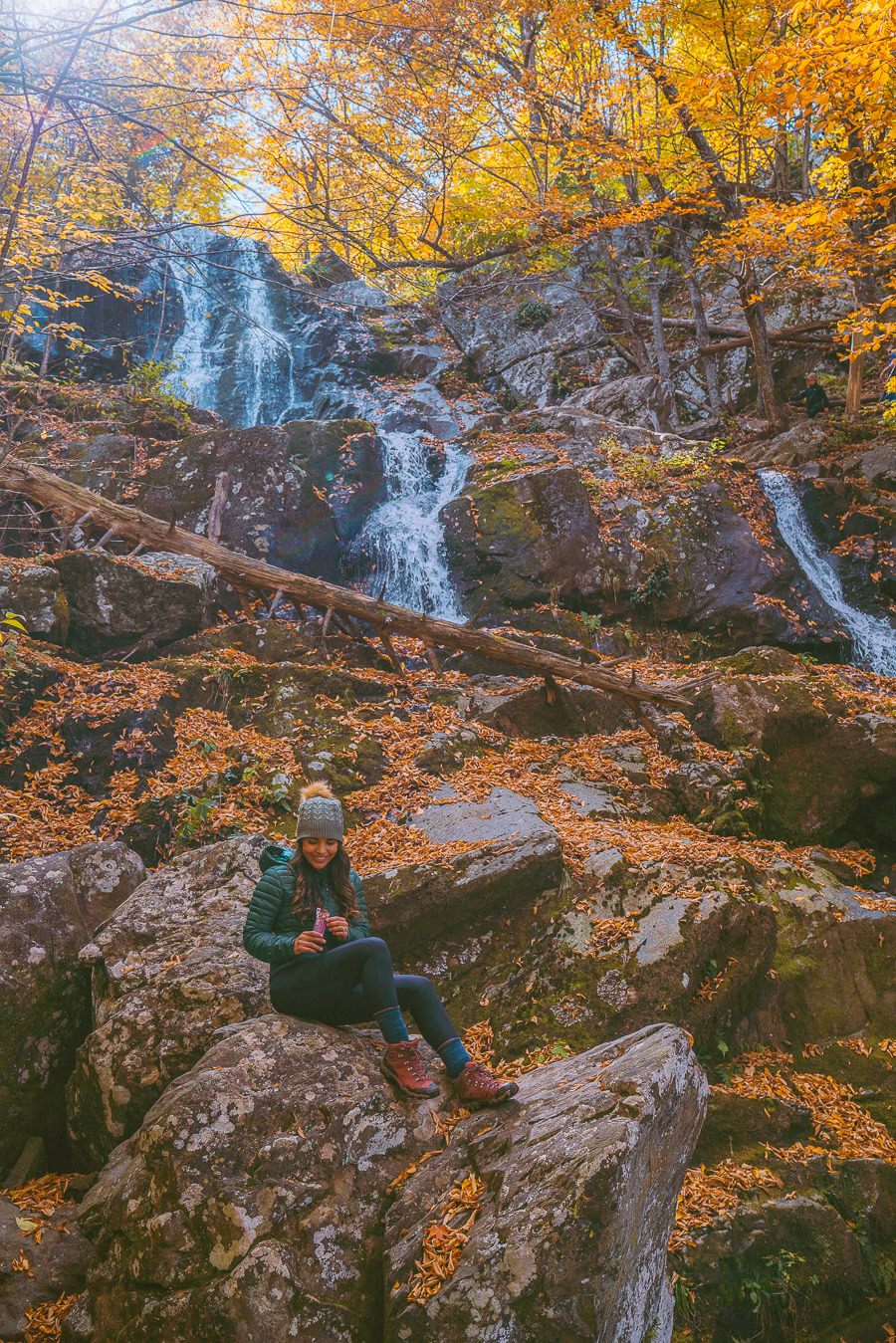
Still have some questions about when to visit Shenandoah National Park? Here are a few commonly asked questions and their answers to help you plan the best trip.
How Many Days Do You Need in Shenandoah National Park?
To fully experience Shenandoah National Park, it is recommended that you spend a minimum of two to three days there. This is enough time to curate your own adventure, from hiking amidst wildflowers or foliage to exploring the Shenandoah River, fishing, or boating.
What Time of Year Is Best to Do a Skyline Drive?

Fall is undeniably the perfect time to visit this national park. The foliage transforms the valley into a vibrant display of red, orange, and yellow leaves, making for an unforgettable trip.
What Is the Best Time to See Peak Foliage in Shenandoah National Park?

The most ideal time to see the fall foliage is between late October to mid November. The exact timing varies from year to year due to weather conditions, but this period is a safe bet.

Tip: Check out the National Park Service website for info on weather conditions for Shenandoah and other national parks. Or, head to the Byrd visitor center and other visitor centers in the park for any advice or info if already at the park.
Wrapping Up the Best Time to Visit Shenandoah National Park
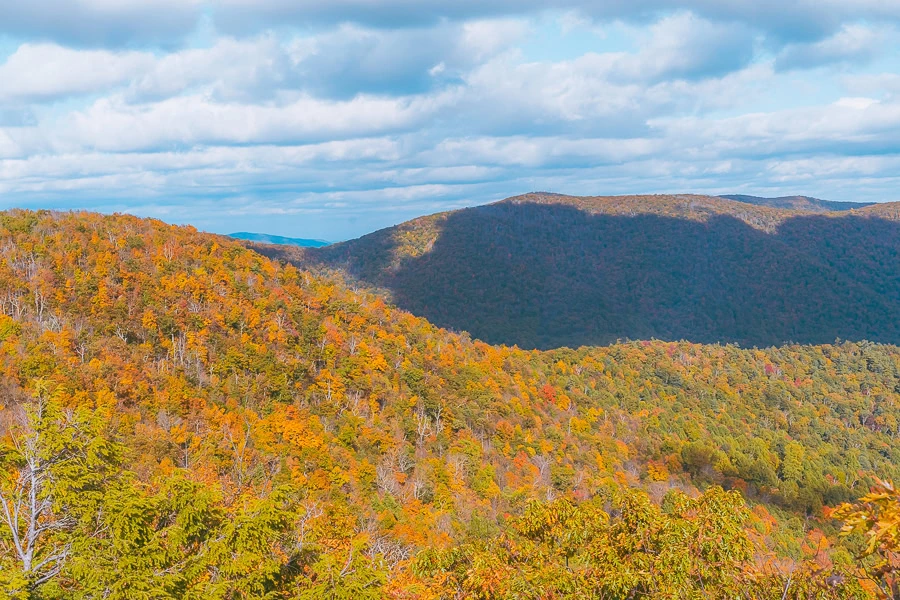
No matter when you choose to visit this beautiful national park on the East Coast, each season offers its own unique charm and opportunities for adventure.
From the blooming spring wildflowers and the lush summer greenery to the spectacular fall leaves and the peaceful serenity of winter, Shenandoah has something for everyone.
Whether you’re a nature lover looking to explore the best of Shenandoah or just an outdoor enthusiast eager to experience the raw nature of Northern Virginia, this is the right place for you.
Next Read: Best National Parks on the East Coast

